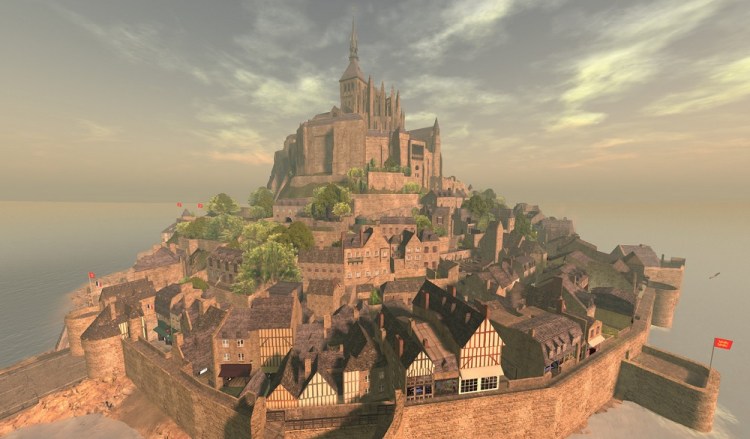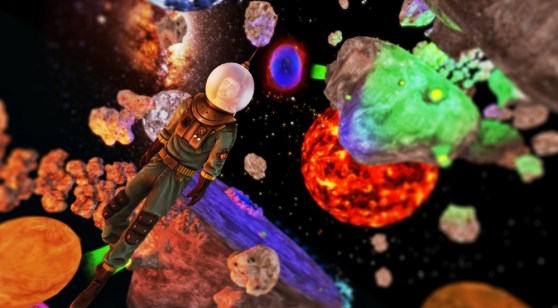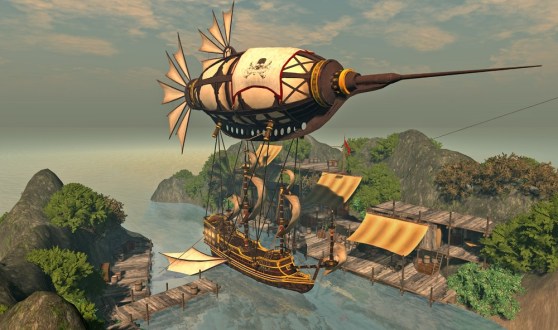GamesBeat: This Blocksworld creativity space seems to have some competition. Microsoft just launched Project Spark. Minecraft is an obvious example.
Altberg: There are some similarities there as far as users creating things. But it’s in the vein of Second Life as well. It’s not just clicking zombies. It’s kids creating things as they imagine them. Even though it’s very simple, it’s very sophisticated. Kids learn how to program, how to think about logic, how to construct, how to tell stories. They get to showcase themselves.
We’re learning a ton about how to make creation easy and fun. We’re learning how kids interact with a device like this. We’ve done barely any marketing around this. We’re still evolving this product, still early. But we’re already up to just about 400,000 monthly users. We’re a top-ranked game in the education category. We tend to be near the top in both the family and education categories of the App Store, at least in the U.S. The app is available globally, but at the moment, it’s English only.
We first released it worldwide a little more than a year ago. We had our first anniversary in August. Once you create a world, you can share it within the app. Anyone who has it around the world can play. Part of what’s interesting as you browse through the community, you see what kids make and what they like when you hand that power to them. You give kids a stack of Legos and say, “Make me something.” We see a lot of kids humor stuff, a lot of pop-culture things. Lots of memes.
It’s very similar to Second Life in that it’s all user-generated content. But we’re targeting a very easy-to-construct interface. People have showed how easy it is to construct. It’s probably kids around six or seven to 17 kind of range. That’s the key demographic.
It’s a way for them to express themselves in three-dimensional form with scripting. It’s all drag and drop. You can see here by dragging blocks around. It’s sort of like digital Legos. You can build and scale these blocks. You can color and texture them. Then we have what we call action blocks, things like wheels. Here I can drag out four wheels, put them in place, they just snap together. If I hit play, it’ll drive off.
GamesBeat: How does Blocksworld make money?
Altberg: We’re still playing with that. To date, we give you a certain set of basic blocks, but then you can buy more sophisticated blocks. If you want some of this custom IP or certain types of action blocks or what you might call bling, you can use coins to buy them. You can earn coins by creating and getting likes from other users, or you can put money in and buy coins to then buy blocks.
Over time, we’ll go more and more down the path of letting kids earn through their creations like in Second Life. I’d envision, over the next few quarters, getting into a user-to-user economy where kids can sell pieces or constructions. Like, if I find a really cool car I want to put in my world, there will probably be a marketplace someday where kids can buy and sell stuff. I’m looking forward to kids being able to cash out.
Monetization leads nicely to what’s new or upcoming about Blocksworld. Right now, if I want a set, I buy coins or earn them and then redeem the coins for that new set in the shop. At the moment, I have a singular inventory. As I build worlds, I’m depleting from that inventory. If I have 10 wheels and I use 10 wheels in one world, when I go to build another world, I either need to take them back from that one — sort of like physical Legos — or go buy some more.
I’m not too worried about monetization. Whether it’s a subscription, an upfront price, or kids earning money and we take a piece of the action from an in-world marketplace, we’ll play with those variables. The key thing to continue having success on is user engagement and growth.
VentureBeat's mission is to be a digital town square for technical decision-makers to gain knowledge about transformative enterprise technology and transact. Learn More



